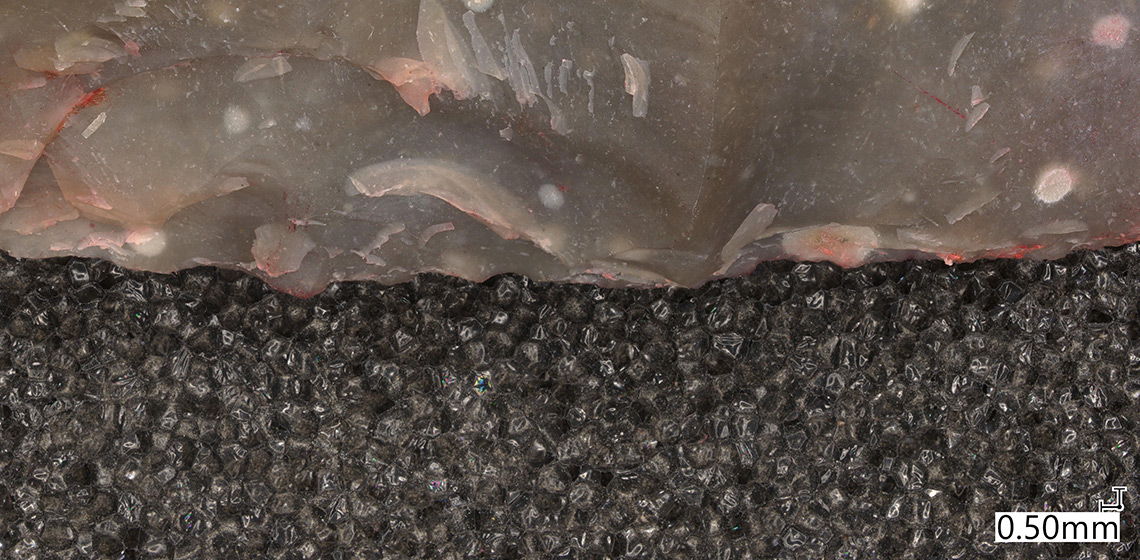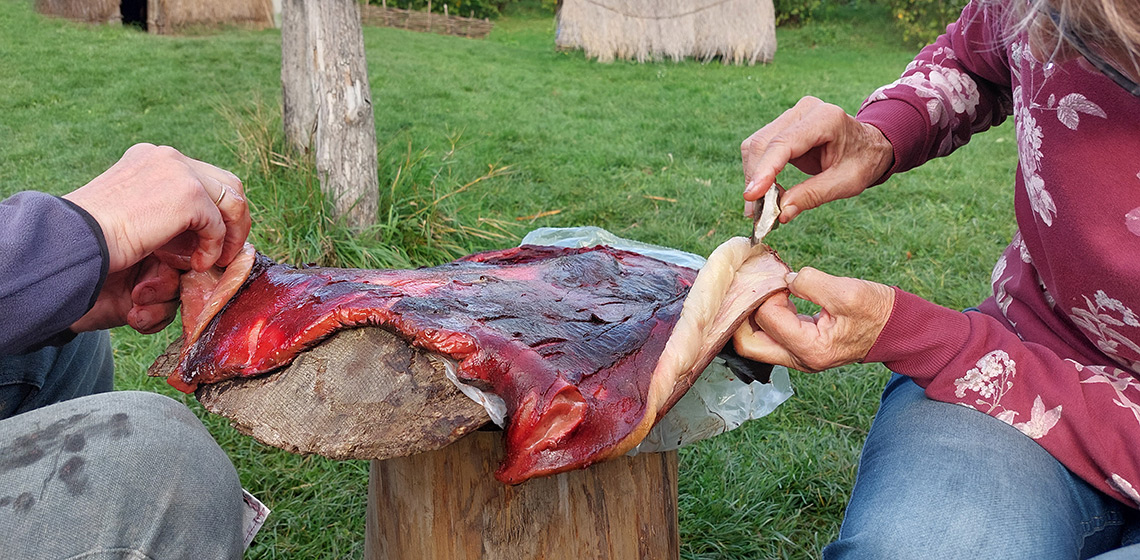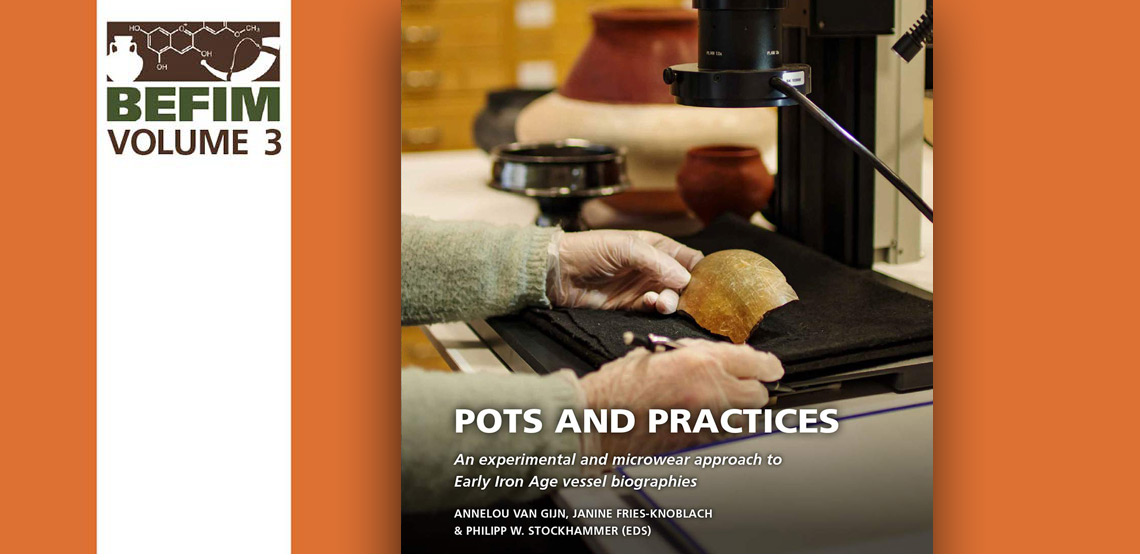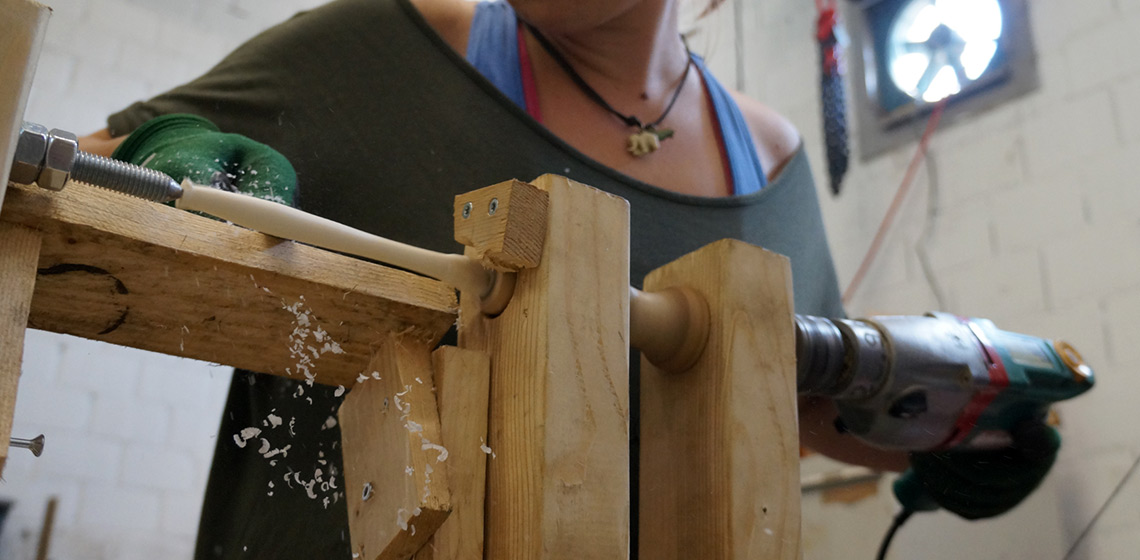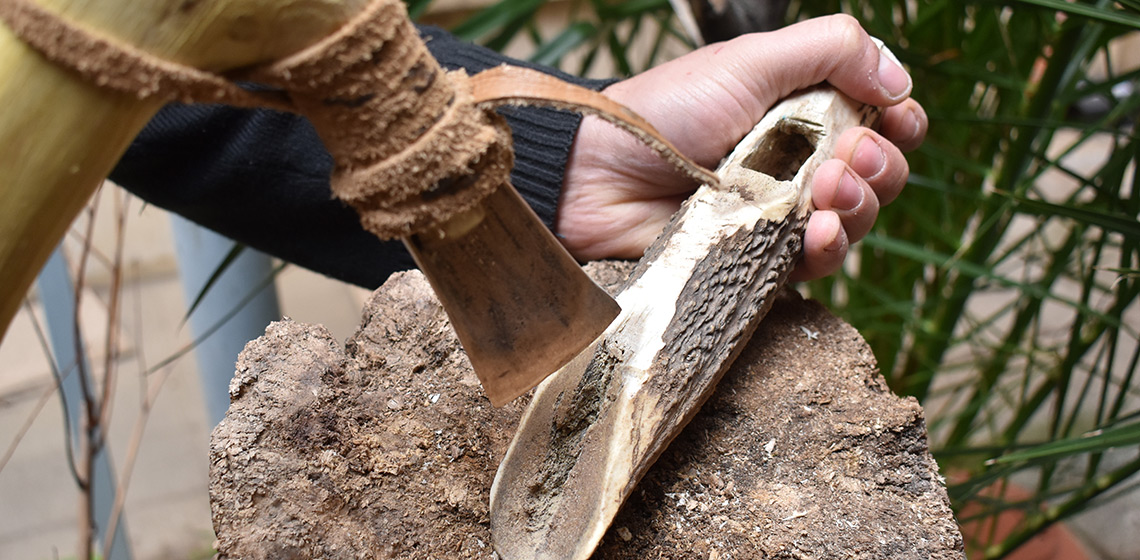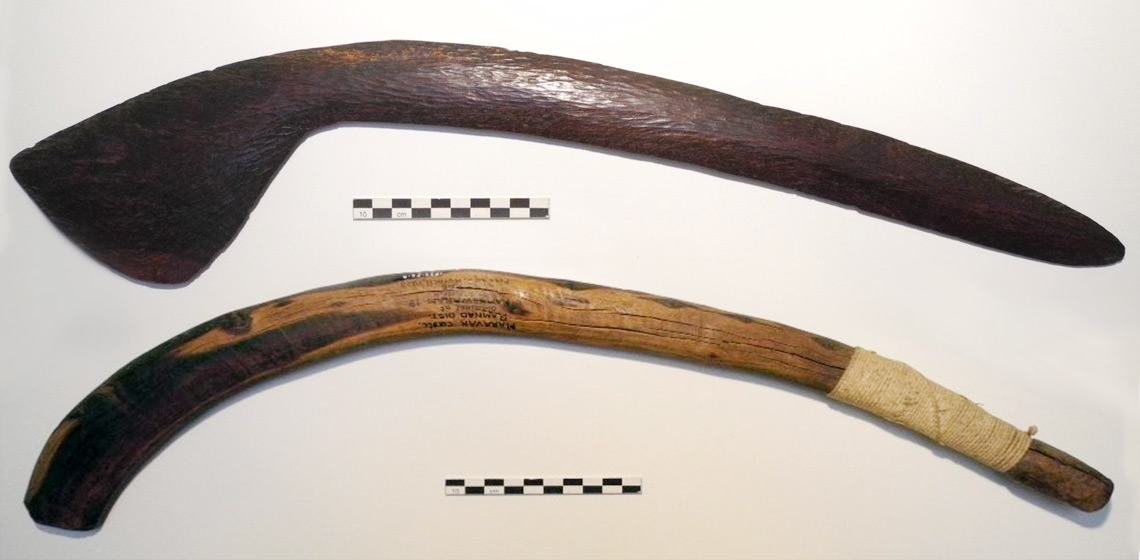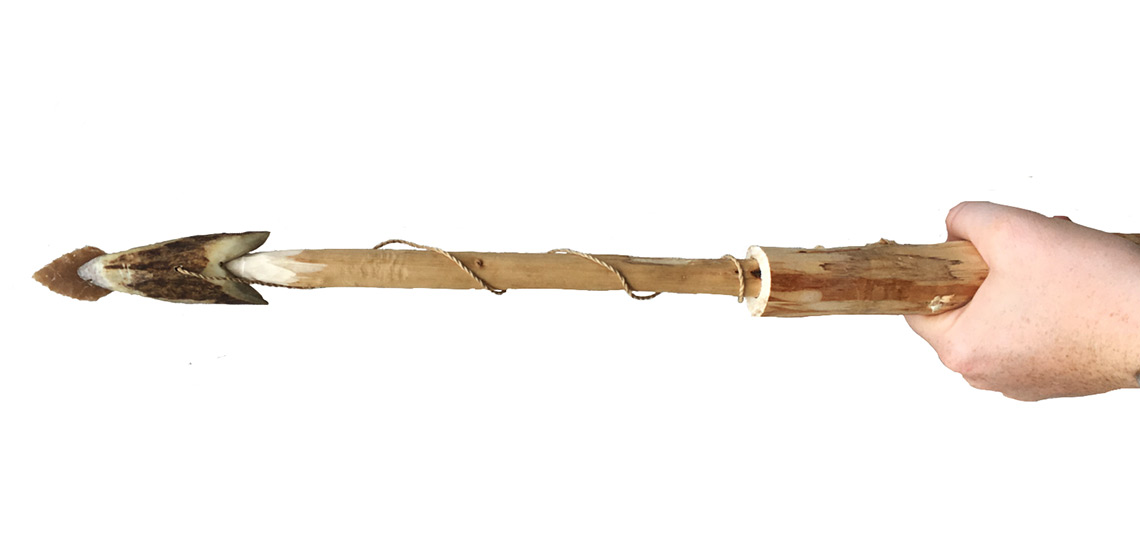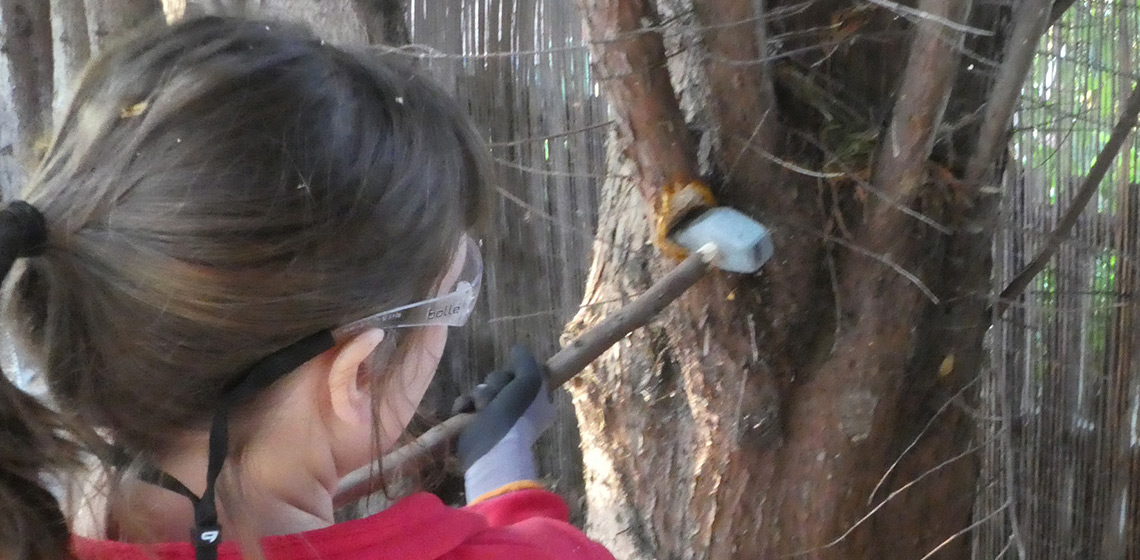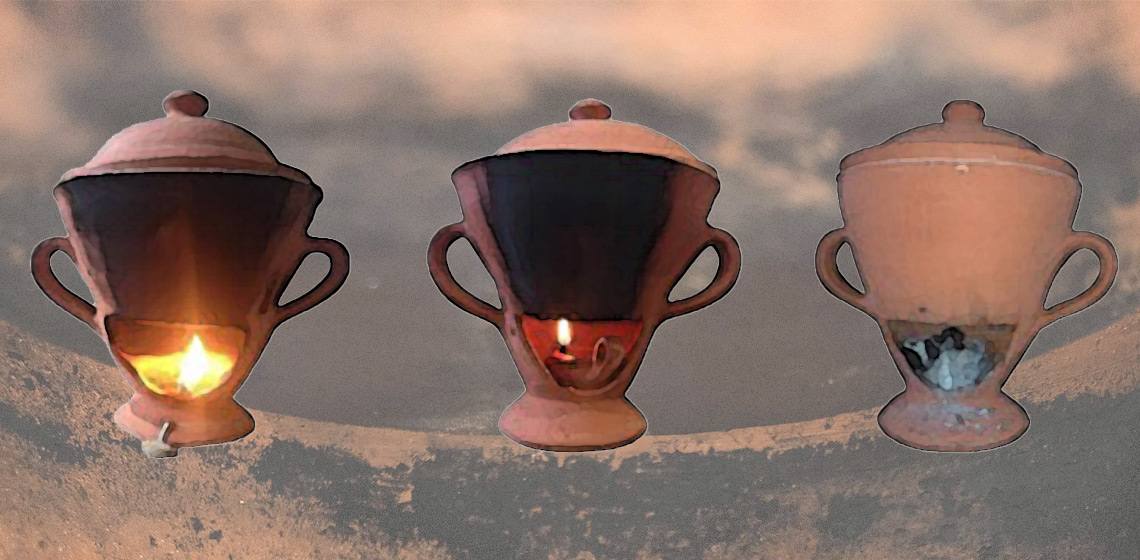use wear analysis
Cross-Contamination via Stone Tool Use: A Pilot Study of Bifacial Butchery Tools
Publication Date
The pathogenic environment has been a constant shaping presence in human evolution. Despite its importance, this factor has been given little consideration and research. Here, we use experimental archaeology and microscopic analysis to present and support a novel hypothesis on the pathogenic properties of bifacial butchery tools...
Scraping Seal Skins with Mineral Additives
Publication Date
Neolithic scrapers from the Vlaardingen Culture (3400-2500 BC) display a variety of hide-working traces, amongst which traces interpreted as being the result of contact with dry hide. It has been suggested that, potentially, some of these implements were used to scrape fatty hides with mineral additives. Therefore, a series of experiments...
Book Review: Pots and Practices: An experimental and microwear approach to Early Iron Age Vessel Biographies by Annelou van Gijn et al (ed)
Publication Date
New or not new to experimental archaeology and microwear methodology in archaeology? Pots and Practices presents a succinct methodology to the analysis developed by archaeologists and a practicing ceramic artist, an investigation into working together on the relationship between two sites, their similarities and differences...
Roman Bone Artefacts – First Steps Towards a New Approach
Publication Date
To date, archaeologists often use a typological approach to assess the functions of bone artefacts from the Roman period. In some of these assigned typological groups, certain artefacts do not have a clear definition. This study aimed to assess whether use-wear analysis combined with experimental archaeology could be applied to bone artefacts from the Roman period as ...
Hoes or Adzes? Experimental Reproduction and Uses of Deer Antler Tools from the Bronze Age Terramara of Pragatto (Italy)
Publication Date
#EAC12 World Tour 2021
***This research aimed to evaluate the hypotheses related to the production and possible uses of a class of deer antler tools from the Bronze Age Terramara of Pragatto (Italy). These bevel-ended instruments are traditionally considered handled hoes, related to agricultural purposes such as tillage...
***This research aimed to evaluate the hypotheses related to the production and possible uses of a class of deer antler tools from the Bronze Age Terramara of Pragatto (Italy). These bevel-ended instruments are traditionally considered handled hoes, related to agricultural purposes such as tillage...
Traces of Manufacture, Use, Repair and Modification Observed on Ethnographic Throwing Sticks and Boomerangs
Publication Date
Throwing sticks and boomerangs are present in the collections of many French and international museums. Collected mainly in the 19th and 20th centuries by travelers, they were mainly analyzed from a stylistic point of view, to relate them to their region of origin. Some of these objects were made by the indigenous populations especially to be exchanged with Europeans and only bear macro-traces of manufacture...
Hunting for Use-Wear
Publication Date
Harpoons are an essential part of the hunting toolkit amongst Inuit and have been integral to the material culture assemblage of Arctic groups for thousands of years. The pre-Inuit population known as the Dorset cultures (app. 800 BC–1300 AD) - also sometimes referred to as Tuniit - were highly dependent on a maritime subsistence with harpoon heads as one of the dominant artefact categories at Dorset sites. Although the use of these harpoons is known...
Enhancing the Accuracy of Use Interpretation: The Discovery of a New Wear Formation with the Complementary Methods of Experimental Archaeology and Use-Wear Analysis
Publication Date
11th EAC Trento 2019
***Experimental archaeology and use-wear analysis are methods used together to understand aspects of an object’s life, such as manufacture and use. This paper demonstrates the benefits of analysing use-wear through experiments. It presents the results of experiments which were carried out to test the use of battle-axes and axe-hammers...
***Experimental archaeology and use-wear analysis are methods used together to understand aspects of an object’s life, such as manufacture and use. This paper demonstrates the benefits of analysing use-wear through experiments. It presents the results of experiments which were carried out to test the use of battle-axes and axe-hammers...
Hafted Tool-use Experiments with Australian Aboriginal Plant Adhesives: Triodia Spinifex, Xanthorrhoea Grass Tree and Lechenaultia divaricata Mindrie
Publication Date
Hafted stone tools commonly figure in Australian archaeology but hafting traces and manufacture processes are infrequently studied. The Aboriginal processing of resin from Xanthorrhoea (Sol. Ex Sm.) grass tree, Triodia (R.Br.) spinifex and Lechenaultia divaricata (F.Muell.)...
Experimental Study of Byzantine Chafing Dishes
Publication Date
This article sets out to examine the production, function, and use of Byzantine chafing dishes, which have been largely neglected by academic literature. As no practical engagement with chafing dishes has been previously attempted, experimental archaeology was chosen as a methodological tool capable of testing hypotheses associated with these wares and generating new research questions...

